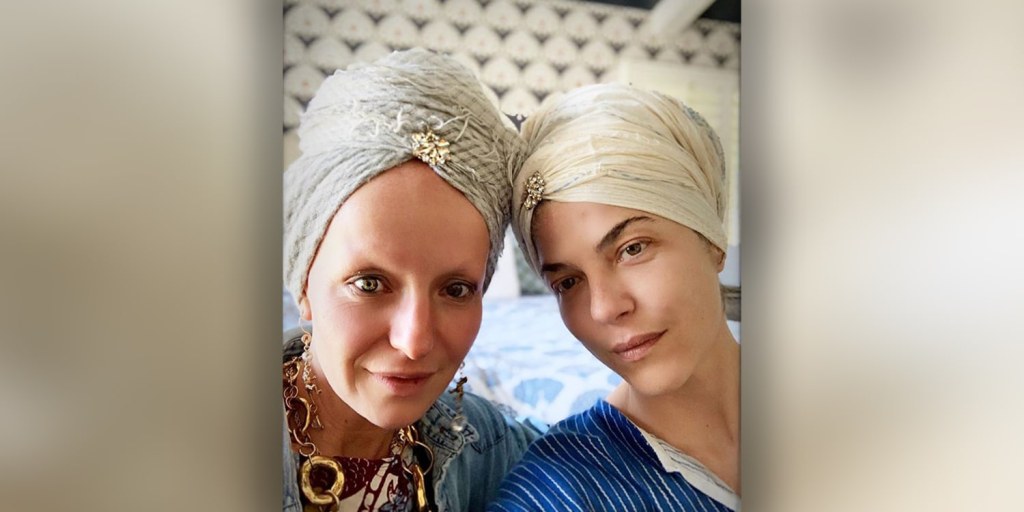Is Wearing A Head Scarf Cultural Appropriation? Unveiling The Truth And Taking Action!
Is Wearing a Head Scarf Cultural Appropriation?
Introduction
Hello, Scarf Wearer! Welcome to this article where we will delve into the topic of cultural appropriation and its relation to wearing a head scarf. In recent years, the discussion around cultural appropriation has gained momentum, with people debating whether it is acceptable to adopt elements from other cultures. In this article, we will explore the various perspectives surrounding the question, Is wearing a head scarf cultural appropriation? Let’s dive in!
1 Picture Gallery: Is Wearing A Head Scarf Cultural Appropriation? Unveiling The Truth And Taking Action!

1. What is cultural appropriation?

Image Source: s-nbcnews.com
2. Who is affected by cultural appropriation?
3. When does wearing a head scarf become cultural appropriation?
4. Where does cultural appropriation occur in relation to head scarves?
5. Why is the concept of cultural appropriation important to discuss?
6. How can individuals respectfully engage with head scarves from different cultures?
What is Cultural Appropriation? 🌍
Cultural appropriation refers to the adoption of elements from one culture by members of another culture. This often involves taking aspects that hold cultural significance and using them outside of their original cultural context. It is important to note that cultural exchange, which involves sharing and appreciating different cultural practices, is different from cultural appropriation.
The Difference Between Cultural Exchange and Cultural Appropriation
Cultural exchange promotes understanding and appreciation of different cultures, fostering a sense of unity. It involves a mutual exchange of ideas, traditions, and practices while respecting the cultural origins. On the other hand, cultural appropriation tends to be a one-sided process in which elements of a marginalized culture are cherry-picked and commodified by the dominant culture, often resulting in the erasure of the original cultural significance.
Examples of Cultural Appropriation
Cultural appropriation can manifest in various forms, such as fashion trends, hairstyles, music, and even language. Instances like wearing Native American headdresses as fashion accessories or adopting traditional African hairstyles without understanding their cultural significance are examples of cultural appropriation.
The Impact of Cultural Appropriation
Cultural appropriation can perpetuate stereotypes, undermine cultural identities, and contribute to the marginalization of oppressed communities. It is essential to approach cultural practices with respect, understanding, and a willingness to learn about their historical and cultural significance.
Who is Affected by Cultural Appropriation? 🌎
Cultural appropriation affects communities whose cultural practices and symbols are borrowed without proper understanding or respect. It is often marginalized communities that face the consequences of cultural appropriation, as their cultural heritage is commodified and stripped of its original meaning.
Cultural Appropriation and Head Scarves
Head scarves hold deep cultural significance in various communities around the world. They are worn for religious, traditional, or personal reasons. Wearing a head scarf without understanding its cultural context can be seen as a form of cultural appropriation. However, the nuances surrounding this issue should be explored to understand the different perspectives.
Communities Affected by Head Scarf Cultural Appropriation
Head scarves, known by different names like hijabs, turbans, and keffiyehs, are associated with specific cultures and religions. For example, the hijab is a symbol of modesty within the Muslim community. When individuals outside of this community wear it without understanding its significance, it can be seen as cultural appropriation and may offend those who cherish its importance.
Understanding Intent versus Impact
It is crucial to consider the intent behind wearing a head scarf and the impact it may have on the affected communities. While some individuals may wear head scarves to appreciate and respect other cultures, others may unknowingly contribute to cultural appropriation due to a lack of awareness. Engaging in open dialogue and learning from diverse perspectives can help navigate this complex issue.
When Does Wearing a Head Scarf Become Cultural Appropriation? ⌚️
Wearing a head scarf becomes cultural appropriation when it involves taking a cultural symbol out of its original context and using it without proper understanding, respect, or permission from the culture it belongs to. However, it is essential to recognize that not all instances of head scarf-wearing can be classified as cultural appropriation.
Factors to Consider
Several factors contribute to determining whether the act of wearing a head scarf is cultural appropriation:
1. Historical and Cultural Significance: Understanding the historical and cultural significance of the head scarf within a specific community is crucial. This knowledge helps avoid misrepresentation or trivialization of the symbol.
2. Respectful Engagement: Engaging respectfully with the community that the head scarf represents is essential. This involves actively seeking information, listening to their perspectives, and acknowledging their experiences.
3. Permission and Appreciation: Seeking permission and expressing appreciation for the culture when adopting elements such as head scarves is a way to avoid cultural appropriation. This shows respect for the community’s values and traditions.
4. Power Dynamics: Cultural appropriation often occurs within power imbalances, where the dominant culture appropriates elements from marginalized cultures. It is crucial to consider these power dynamics and strive for equity and inclusivity.
5. Impact on the Affected Community: Understanding the potential impact on the affected community is vital. If the act of wearing a head scarf causes harm, perpetuates stereotypes, or erases cultural significance, it can be considered cultural appropriation.
By considering these factors, individuals can navigate the complex terrain of cultural appropriation and make informed decisions regarding the adoption of head scarves or any other cultural practices.
Where Does Cultural Appropriation Occur in Relation to Head Scarves? 🗺️
Cultural appropriation related to head scarves can occur in various contexts, such as fashion, media representation, and everyday interactions. It is essential to be mindful of these instances and approach them with sensitivity and respect.
Fashion Industry and Head Scarves
In the fashion industry, head scarves are sometimes used as trendy accessories without acknowledging their cultural roots. This can lead to the erasure of the significance behind head scarves and perpetuate stereotypes. Fashion brands and designers should consider cultural sensitivity and collaboration when incorporating head scarves into their collections.
Media Representation and Head Scarves
Media plays a significant role in shaping perceptions and promoting cultural understanding. However, it can also contribute to cultural appropriation if head scarves are portrayed inaccurately or sensationalized. Promoting authentic representation and diverse voices can help combat cultural appropriation.
Everyday Interactions and Head Scarves
Individuals should be mindful of their intentions and the impact of their actions when it comes to wearing head scarves. Engaging in cultural exchange through respectful conversations, learning opportunities, and fostering understanding can help create a more inclusive society.
Why is the Concept of Cultural Appropriation Important to Discuss? ❓
The concept of cultural appropriation is important to discuss because it raises awareness about power dynamics, cultural sensitivity, and the preservation of cultural heritage. By engaging in conversations about cultural appropriation, we can strive for a more inclusive and respectful society.
Preserving Cultural Heritage
Cultural appropriation can dilute the significance of cultural practices and erode the cultural heritage of marginalized communities. By understanding and respecting the origins and meanings behind cultural symbols like head scarves, we can contribute to their preservation.
Fostering Understanding and Empathy
Discussing cultural appropriation allows us to learn from different perspectives and promote empathy. By engaging in dialogue and actively listening to the experiences of others, we can foster understanding and bridge cultural divides.
Examining Power Dynamics
Cultural appropriation often occurs within power imbalances, with dominant cultures appropriating elements from marginalized cultures. By acknowledging these power dynamics, we can work towards dismantling systemic inequalities and promoting equity.
How Can Individuals Respectfully Engage with Head Scarves from Different Cultures? 🤝
Respectful engagement with head scarves and other cultural practices is essential to avoid cultural appropriation. Here are some ways individuals can approach head scarves from different cultures with respect:
1. Educate Yourself: Take the time to educate yourself about the cultural significance of head scarves within specific communities. Read books, listen to personal narratives, and engage in dialogue to gain a better understanding.
2. Seek Permission: If you are considering wearing a head scarf, seek permission from the culture it belongs to. Understand that obtaining permission is not always possible, and in such cases, proceed with caution and respect.
3. Appreciate and Acknowledge: When wearing a head scarf, appreciate and acknowledge the cultural significance behind it. Understand that it is more than just a fashion statement and carries deep meaning for the communities it represents.
4. Support and Promote Diversity: Actively support and promote diverse voices and representation. Amplify the voices of individuals from the cultures you are engaging with and uplift their experiences and perspectives.
5. Engage in Dialogue: Have open and respectful conversations about cultural appropriation and the importance of cultural understanding. By engaging in dialogue, we can learn from each other and foster a more inclusive society.
Advantages and Disadvantages of Wearing a Head Scarf: Pros and Cons ⚖️
Advantages/Pros
1. Expression of Identity: Wearing a head scarf can be a way for individuals to express their cultural or personal identity.
2. Protection and Modesty: Head scarves can offer protection from the sun, wind, or other environmental factors, as well as serve as a symbol of modesty.
3. Empowerment and Confidence: For some individuals, wearing a head scarf can be empowering and boost their confidence.
Disadvantages/Cons
1. Misrepresentation and Stereotyping: Cultural appropriation can lead to misrepresentation and stereotyping of communities, reinforcing harmful narratives.
2. Diminishing Cultural Significance: When head scarves are adopted without understanding their cultural significance, it can diminish the value and importance they hold for the communities they originate from.
3. Erasure of Marginalized Voices: Cultural appropriation can contribute to the erasure of marginalized voices and experiences, perpetuating inequality.
Frequently Asked Questions (FAQs) ❔
1. Is wearing a head scarf always cultural appropriation?
No, wearing a head scarf is not always cultural appropriation. It depends on various factors, such as understanding the cultural context, respecting the culture it belongs to, and seeking permission if necessary.
2. Can I wear a head scarf from a different culture if it aligns with my beliefs?
While it is important to respect and appreciate cultural practices, it is advisable to consider the cultural context and significance of the head scarf before adopting it as your own, especially if it holds religious or cultural significance for a particular community.
3. How can I avoid cultural appropriation when wearing a head scarf?
To avoid cultural appropriation, educate yourself about the cultural significance of head scarves, seek permission if necessary, and appreciate and acknowledge the culture it belongs to.
4. What can I do to support cultural exchange without appropriating?
Supporting cultural exchange involves actively seeking knowledge, engaging in respectful dialogue, and amplifying diverse voices. By promoting understanding and appreciation for different cultures, we can foster meaningful connections.
5. How can I contribute to the preservation of cultural heritage?
To contribute to the preservation of cultural heritage, show respect for cultural practices, learn about their historical and cultural significance, and support initiatives that aim to preserve and uplift marginalized cultures.
Conclusion: Promoting Respectful Engagement with Head Scarves
In conclusion, the question of whether wearing a head scarf is cultural appropriation requires careful consideration of the cultural context, respect, and understanding. By educating ourselves, seeking permission, appreciating cultural significance, and engaging in dialogue, we can promote respectful engagement with head scarves and avoid perpetuating harmful practices. Let’s celebrate diversity, foster understanding, and promote inclusivity in our interactions with different cultures.
Final Remarks: Embracing Cultural Diversity
Scarf Wearer, as we reach the end of this article, let us remember that embracing cultural diversity entails respecting and appreciating the values, traditions, and symbols that hold meaning for different communities. By actively learning, engaging in dialogue, and respecting cultural contexts, we can foster a more inclusive and equitable society. Let us celebrate the beauty of cultural exchange while being mindful of the potential harm caused by cultural appropriation. Together, we can create a world where cultural diversity is celebrated and cherished.
This post topic: Scarf



